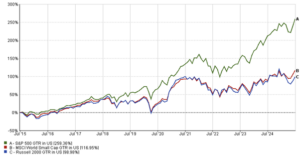Oil prices stabilized in Asian trade Friday, having risen for the first week in five, driven by a cocktail of factors ranging from bargain buying to improving sentiment towards the U.S. economy and geopolitical tensions that continue to brew.
Resurgence in Oil Prices
After a losing streak over the past month, oil prices did rebound a little this week. That was after huge pressure brought down by fears of a potential recession in the United States and poor data from China, which had forced crude prices to their lowest in seven months.
On Friday, Brent crude futures eased 9 cents, or 0.11%, to $79.07 per barrel, while U.S. West Texas Intermediate crude futures fell a cent to $76.09 per barrel. Both benchmarks, however, remained headed for weekly gains in excess of 3%, recovering drastically from the falling trend seen in the last few weeks.
Geopolitical Tension, Market Risks
This week, a major driver of recovery has been the re-priced risk premium in oil due to increasing geopolitical tensions. In fact, Ukraine launched one of its most significant attacks on Russia since the outbreak of the war in early 2022. Most likely, this has rung some alarm bells over possible disruptions in energy supplies, especially in Europe, which continues to be materially dependent on Russian oil and gas.
Also fueling the geopolitical risks are the prolonged tensions in the Middle East, keeping markets on edge. Israel escalated the airstrikes across the Gaza Strip, killing at least 40 people, according to Palestinian medical sources. This will increase concerns over a wider regional conflict with possible retaliations by Iran and Hamas against Israel, which would add to that uncertainty.
A confluence of these geopolitical factors has compelled traders to reassess the risk associated with holding oil, that is, the possibility of raising supply disruptions increasing positions for the better part. This provided a big push to oil prices, helping offset bearish sentiment which dominated the market in the recent weeks.
Mixed Signals Sent by Chinese Economic Data
The Chinese economy stays a potent factor for worldwide oil prices, as it is the global leader in oil imports. Government data Friday disclosed that China's July consumer price index, or CPI, inflation rose slightly higher than expected but the drop in PPI inflation was lower than expected.
Although better-than-expected data on inflation has somehow comforted the oil markets, the picture generally stays mixed. Another small rise in the rate of inflation raises hopes that Beijing's recent effort to stimulate the economy—including a series of interest rate cuts in July—might finally be paying off. However, the fall in factory prices persisted, underscoring an enduring deflationary trend that has triggered misgivings over whether economic recovery can be sustained in China.
Also, Chinese oil imports contracted in July, boosting concerns that the demand in the country is slowing. Of all this, the import contraction has remained the major worry for the oil markets, as China dwarfs nearly every country in energy consumption. Therefore, any market will be keen to watch for clues of rebounding demand in China, which is important for sustaining the recent gains in oil prices.
U.S. Economic Indicators and Market Sentiment
Off geopolitical risks and Chinese economic data, the dynamics of the oil market have been influenced by the U.S. economy. Indications of continued draws in U.S. crude stockpiles have given a boost to sentiment that there is still sound demand, especially in the heavily traveled summer season.
Meanwhile, upbeat data on the U.S. jobless claims, out Thursday, alleviated worries over a slowdown in the labor market. Data showed that the labor market decline was not as bad as many had feared, boosting sentiment and supporting price action in oil.
The dollar index moved 0.214% higher to 103.2, edging further away from Monday's seven-month low of 102.15. A stronger dollar puts downward pressure on oil price action because, quite literally, the commodity becomes more expensive for holders of other currencies. But here the firm data outweighed this negative pressure from a stronger dollar.
Global Equity Markets and Oil
The performance of the oil market has this week also been influenced by moves in global equity markets. Earlier this week, a mix of weak US jobs data and fears of an artificial intelligence bubble sent global stocks tumbling, with Japanese equities seeing a 12% crash on Monday. Such a sell-off had initially weighed on oil prices as investors fled riskier assets for safe havens.
However, bargain buying proved a potent force as the week wore on, with investors snapping up the security at lower prices to boost holdings. This rush of buying helped underpin prices and paved the way for the first weekly gain in five weeks.
Oil Markets Outlook
Looking forward, oil markets remain very responsive to events at both the geopolitical level and data from the global economy. Although recent price rebounds have provided some relief to market players, the underlying risks stemming from geopolitical tensions and economic uncertainties are huge.
Obviously, the situations in the Middle East and Ukraine will be watched with interest; any escalation from either area would be a blow to world energy supplies. The course taken by the Chinese economy will be the key to future oil demand, and any sign of sustained recovery will likely further support the price of oil.
Oil market, for now, finds some balance but the future ever precarious. In such a climate of uncertainty, only by being quick at adapting to constantly changing scenarios can traders hope to squeeze any form of profitability from any market position that does turn favorable.
Conclusion
Oil prices held resilient this week on a mix of bargain buying, improving sentiment in the U.S. economy, and persistent geopolitical tensions. Though the market has had the capacity to recover from recent lows, uncertainty lies ahead, where a range of issues is set to take center stage and guide future price trends. As such, geopolitical risks, economic data releases, and currency movements will probably be in the foreground. As with many other things, traders would have to remain alert and responsive to these in order to benefit the most from the opportunities presented and minimize risks as the oil market remains volatile.





